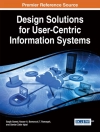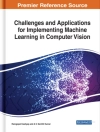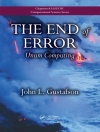Enterprises have made amazing advances by taking advantage of data about their business to provide predictions and understanding of their customers, markets, and products. But as the world of business becomes more interconnected and global, enterprise data is no long a monolith; it is just a part of a vast web of data. Managing data on a world-wide scale is a key capability for any business today.
The Semantic Web treats data as a distributed resource on the scale of the World Wide Web, and incorporates features to address the challenges of massive data distribution as part of its basic design. The aim of the first two editions was to motivate the Semantic Web technology stack from end-to-end; to describe not only what the Semantic Web standards are and how they work, but also what their goals are and why they were designed as they are. It tells a coherent story from beginning to end of how the standards work to manage a world-wide distributed web of knowledge in a meaningful way.
The third edition builds on this foundation to bring Semantic Web practice to enterprise. Fabien Gandon joins Dean Allemang and Jim Hendler, bringing with him years of experience in global linked data, to open up the story to a modern view of global linked data. While the overall story is the same, the examples have been brought up to date and applied in a modern setting, where enterprise and global data come together as a living, linked network of data. Also included with the third edition, all of the data sets and queries are available online for study and experimentation at data.world/swwo.
विषयसूची
- Preface
- What is the Semantic Web?
- Semantic modeling
- RDF—the basis of the Semantic Web
- Semantic Web application architecture
- Linked data
- Querying the Semantic Web—SPARQL
- Extending RDF: RDFS and SCHACL
- RDF Schema
- RDFS-Plus
- Using RDFS-Plus in the wild
- SKOS—managing vocabularies with RDFS-Plus
- Basic OWL
- Counting and sets in OWL
- Ontologies on the Web—putting it all together
- Good and bad modeling practices
- Expert modeling in OWL
- Conclusions and future work
- Bibliography
लेखक के बारे में
Dean Allemang is a consultant specializing in Semantic Web deployments in a number of industries, including finance, media, government and pharmaceuticals. He works as a staff ontologist for the Enterprise Data Management (EDM) Council, working primarily on the Finance Industry Business Ontology (FIBO). He is a member of the advisory board of data.world, and formerly Chief Scientist at Top Quadrant, the first company in the US devoted to the Semantic Web.Hewas the recipient of a National Science Foundation Graduate Fellowship and the President’s 300th Commencement Award at Ohio State University. He has studied and worked extensively throughout Europe and Australia, as a Marshall Scholar at Trinity College, Cambridge, UK from1982 through to 1984, was twice winner of the Swiss Technology Prize (1992 and 1996), and served as Chief Scientist of Capsicum Pty Ltd, an early adopter of Semantic Web Technology in Australia. He has served as an invited expert on numerous international review boards, including a review of the Digital Enterprise Research Institute – the world’s largest Semantic Web research institute, and the Innovative Medicines Initiative, a collaboration between a consortium of pharmaceutical companies and the European Commission to set the roadmap for information management in the pharmaceutical industry for the near future.












